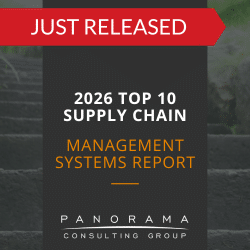What was going on? The prominent flooring retailer attributed the dip to its recent SAP ERP implementation. The go-live, they explained, had zapped worker productivity and caused performance levels to drop.
Eventually, the company discovered that the root cause of these issues was the lack of an effective organizational change management plan.
Today, we’re diving into the Lumber Liquidators ERP failure to explore how it began, what went wrong, and what you can learn.
Contemplating litigation?
We have multiple software expert witnesses available for provision of reports, depositions, and testimonies.
The Lumber Liquidators ERP Failure: What Happened?
On paper, it should have worked. All throughout the project, the company’s net sales continued to climb. By the third quarter of 2010, they’d jumped to $147.2 million, which was an overall increase of around $6.7 million since that point the previous year. They even opened ten new stores during those few months.
Yet, before long, it became apparent that a lack of training had left the workforce ill-prepared to embrace the new software. The ERP system was more fixed and rigid in structure than their previous system, and they didn’t know how to adapt.
Unable to use the new tools available to them, worker productivity dropped tremendously. In a press release, Lumber Liquidators announced that the downtime cost between $12 million and $14 million in unrealized net sales in one quarter alone.
Once implemented, the new software sat largely unused. As a result, the company was unable to maintain its typical standards of sales and customer service. Specifically, employees were unable to efficiently:
- Identify open orders
- Track and process orders
- Measure how much inventory was in stock
- Complete customer orders on time
- Convert prospective leads into sales
- Produce the same number of finished goods per hour
Lumber Liquidators tried to divert consumer attention away from these shortcomings by offering generous discounts and promotions. Yet, associated marketing costs were steep.
They were also losing money to higher payroll costs, as employees now required more time to fulfill their job functions.
While operations did improve as more resources joined the project, the impact of the ERP failure was still devastating. The experience taught Lumber Liquidators how important change management can be when you’re changing that many roles and responsibilities.
3 Lessons Learned From This Retail ERP Failure
Let’s look at what you can learn from this failure as you prepare for your own ERP project.
1. Organizational Change Management is a Priority
While technical aspects are important, it’s equally important to devote time, money, and resources to the people who will be using the new tools.
Organizational change management is the process of helping your workforce move forward with confidence. With the right strategy, you can help employees navigate the transition with minimal resistance and maximum enthusiasm.
2. Change Management Starts With Communication
With the SAP solution, this flexibility was lost. The new platform required users to follow certain steps each time they wanted to perform a given action. This was a major shift for the workforce, and it was met with a great degree of resistance and confusion.
Company representatives later explained that the standardization was a good thing, as it ensured that everyone was performing the same action for each function, leading to increased efficiency and cost savings.
Had Lumber Liquidators employees known how these benefits would impact them, it might have changed their perspective. This is why clear communication is a cornerstone of an effective change management strategy.
3. ERP Training Can Increase User Acceptance
A lack of proper training is partially to blame for the Lumber Liquidators ERP failure. When the system went live, in-store staff members were already confused about how to use it. Had project leaders spent more time explaining core concepts and training employees on the system, employees may have felt more empowered from the beginning.
Avoid These Mistakes in Your ERP Project
This remains true even if you’re implementing one of the top ERP systems.
If you’re planning an ERP implementation, our organizational change management consultants can help you integrate change management from the very start. If you’re already in the implementation phase and see failure on your horizon, our software expert witness team can help. In either case, you should contact us below for a free consultation.















